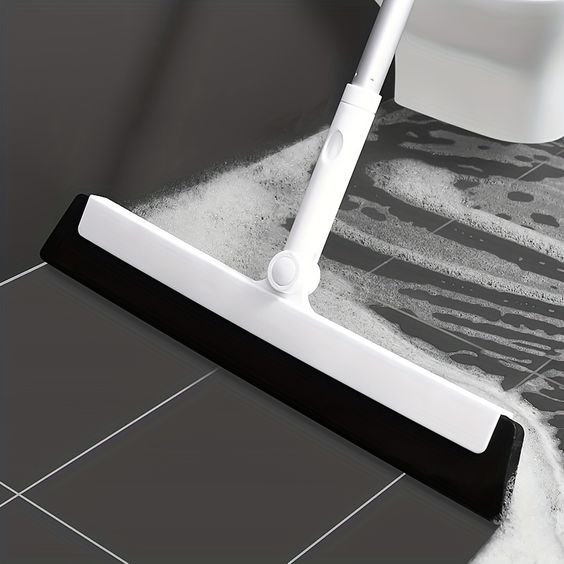Are you spending hours spending hours to scrub your bathroom tiles, still sticking to stubborn stains and grime? We understand the struggle! This is why we are here to present you the Best Bathroom Tiles Cleaners for a Sparkling Shine with the final guide to choose. To spark clean tiles, say goodbye to back-breaking labor and hello, which will take your guests in amazement. Whether you are working with porcelain, ceramic, or natural stone tiles, this broad guide will highlight all the secrets to find the right cleaning solution for your bathroom. Glow surfaces and troublesome dives to a deep dive in the world of free maintenance–Make your dreams a reality a reality!
Table of Contents
Best Bathroom Tiles Cleaners

When it comes to choosing bathroom tiles cleaner liquid, there are some things that you have to keep in mind. The first is that your bathroom contains a form of tile. There are different forms of tiles including ceramic, porcelain, or natural stone, and all require a separate cleaner. For example, ceramic tiles can be cleaned using vinegar or baking soda, while natural stone tiles require a mild detergent.
Types of Cleaners
There are three primary categories of bathroom tile cleaner: acidic, alkaline and enzymetic. Acids are used to dissolve mineral deposits and soap dirt, while alclis is used to dissolve mold and mold. Enzymetic cleaners are used to dissolve organic materials including body oil and dirt. The acidic cleaners can be either inorganic or organic. Inorganic acids include hydrochloric acid and phosphoric acid. Organic acids such as acetic acid and citric acid are included. Baseum chemicals such as sodium hydroxide or potassium hydroxide are commonly used to create alkaline cleaner. Proties or lipis, which degrade protein or fat respectively, is used in enzymetic cleaner.

Image Source: Pinterest
The wiper you use will be determined by the soil type or stain you are trying to remove. For example, if you are trying to remove soap slag, you would use an acid cleaner. If you are trying to remove mold or mold, you would use an alkaline cleaner. And if you are trying to remove body or dirt oils, you would use an enzyme cleaner.
Benefits of Using Bathroom Tiles Cleaner Liquid
There are several advantages of having a liquid for cleaning bathroom tiles. Perhaps the most apparent advantage is that it can help keep the bathroom tiles clean and free of bacteria, dirt and dirt. However, there are also other advantages. For example, employing a bathroom tile cleaning liquid can help maintain the life of your tiles. This is due to the fact that the proper cleansing removes any residue of soap slag, scale of files or other substances that can soften the finish in their tiles over time. Another wonderful advantage of a tile cleaning liquid is that it can make your bathroom cleansing less complicated in the long run.
Factors to Consider When Choosing a Bathroom Tiles Cleaner Liquid
Some of the most important things to remember below are: The first idea is what kind of tile is in your bathroom. There are different cleaners on the market for different types of tiles, so you will need to make sure that you buy one most suitable for your specific tile. According to the level of dirt accumulated on your tiles and the level of frozen filth, another factor requires the strength of the cleaner. If you have a lot of dirt and frozen, a strong cleaner will be necessary to completely remove them.
On the other hand, if your tiles are not very dirty, you may probably be away with using less powerful cleaner. While deciding on the bathroom tiles cleaner liquid, you also have to look at the cost. There is a series of products at various costs, so you have to find something that suits within your budget.
How to Choose the Right Bathroom Tiles Cleaner Liquid?
When you want to choose the appropriate bathroom tiles cleaner liquid, there are some things you should consider. The first thing is the tile you do yourself. The second thing you should think is your bathroom size. If it is small, you would like to choose a cleaner, which does not have to take too much space. Think about your finance. All types of cleaners are available to buy, so make sure you find one that is suitable for your needs and your F
Tips for Maintaining and Preserving Your Tiles
When it comes to choosing a tile cleaner, there are some things that you have to keep in mind. First you have a type of tile. If you have ceramic tiles, you have to use a separate cleaner if you have porcelain tiles. The second thing to consider is the seriousness of stains. If they are just surface stains, you may probably be away with using less powerful cleaner. However, if set in stains or if they are too dark, you will need to use a strong cleaner.
There are some different types of tile cleaners on the market. The most common are acidic cleaners and alkaline cleaners. The acidic cleaner is usually used for ceramic tiles, while alkaline cleaner is better for porcelain tiles. There are also enzymatic cleaners, which are especially designed to break organic materials such as soap scum or body oil. When it comes to cleaning your tiles, there are some different ways that you can use.
You can either scrub them with a brush or sponge, or you can use a power washer. If you choose to scrub your tiles by hand, make sure you use a non-contact cleanser so that you do not damage the tile surface. If you decide to use a power washer, start with the lowest setting and work in your own way until you are strong enough to remove dirt and frozen dirt without damaging the tile.
Conclusion
We hope that this guide has been helpful in aiding you in the selection process of the best bathroom tiles cleaner liquid for your needs. You need to take into account your budget, the desired effect, and usability when making a decision. By conducting some research and knowing what products are available, you can easily choose the right product that will make it simple to clean your bathroom tiles.
READ NEXT: 16+ Best Wall Tiles Design For Bathroom India
RELATED POST:
1. The Secrets of 5 BHK House Design: Crafting Luxury and Style
2. The Best Insider Tips for Low Budget Simple House Design
3. 14+ Stunning Bathroom Tiles Ideas to Transform Your Space
4. 12+ Stylish Terrace Tiles Ideas to Elevate Your Outdoor Space in India
5. Inspiring Trends in 1st Floor House Design




